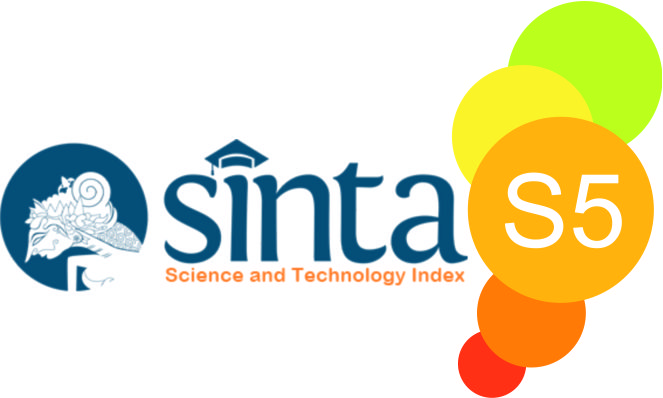Studi Evaluasi Potensi Eco-Nature Tourism & Eco-Culture Tourism di Kawasan Ekowisata Sungsang, Kabupaten Banyuasin
DOI:
https://doi.org/10.23887/jmpp.v5i3.54565Keywords:
Eco-Tourism Resource Evaluation, Eco-Nature Tourism, Sungsang Eco-tourism AreaAbstract
One of the efforts in measuring the amount of ecotourism potential is by conducting a series of academic processes in the form of inventory and assessment of ecotourism potential or better known as ecotourism assessment. The Ecotourism Potential Evaluation method used is the theory of Avenzora (2008) to distinguish 7 assessment criteria for each element of ecotourism potential, which is then analyzed using the One Score One Criteria System method. The results of the study show that the Sungsang Ecotourism Area has a relatively high potential for eco-nature tourism and eco-culture tourism; both in terms of the potential for natural phenomena, flora and fauna, as well as material & immaterial heritage. The results of field studies prove that the various eco-nature tourism owned by the Sungsang Ecotourism Area is classified as relatively high (score 5); while eco-culture tourism is producing a score of 6 or high meaning. There are at least 4 syntheses that can be done in the future: 1) The plan for utilization of ecotourism resources that must be able to avoid the occurrence of over-supply dynamics in the ecotourism supply process; 2) The plan to utilize the diversity of ecotourism resources that should not cause over-exploration or over-exploitation of germplasm or ecosystems; 3) The need for study and application of the carrying capacity of recreation / tourism sites and the carrying capacity of recreation/ tourism destinations; 4) A more comprehensive, systematic and objective study is needed which is mapped and outlined in the Grand Design Document or Ecotourism Master Plan).
References
Adi, S.W., Nasir, M., dan Saputro, E.P. (2013), Model pengelolaan kawasan cagar budaya berbasis kearifan lokal untuk memacu daya tarik wisata budaya - sejarah: Kasus di kawasan Kota Lama Semarang, Jawa Tengah. Laporan Penelitian Unggulan Perguruan Tinggi Tahun Kedua, Dikti.
-------- (2014). Model pengelolaan kawasan cagar budaya berbasis kearifan lokal untuk memacu daya tarik wisata budaya - sejarah: Kasus di kawasan Kota Lama Semarang, Jawa Tengah. Laporan Penelitian Unggulan Perguruan Tinggi Tahun Pertama, Dikti.
Adi SW dan Saputro EP. (2017). Potensi daya tarik wisata sejarah budaya. Prosiding Seminar Nasional Riset Manajemen & Bisnis 2017 “Perkembangan Konsep dan Riset E-Business di Indonesia.
Avenzora, R. (2008). Ekoturisme: Teori dan praktek. Aceh: BRR NAD-Nias.
Avenzora R. (2013). Ekoturisme teori dan implikasi. Di dalam: Dadursman D, Avenzora R. (editors), Pembangunan ekowisata pada kawasan hutan produksi. Program Studi Pasca Sarjana Manajemen Ekowisata dan Jasa Lingkungan, Fakultas Kehutanan, Institut Pertanian Bogor, 61-95. (2013).
Avenzora R, Batubara RP, Fajrin FR, Sagita E, Armiliza RP, Amelia M, Romansyah B, Arifullah N. (2013). Ekowisata Nagari di Ranah Minang, Sumatera Barat: Potensi & dinamika kolaborasi. Di dalam: Teguh MA, Avenzora R, editor. Ekowisata dan pembangunan pariwisata berkelanjutan di Indonesia: Potensi, pembelajaran dan kesuksesan. Jakarta: PT. Gramedia.
banyuasinkab.go.id. (2016). Lumba-lumba air tawar dan Burung Migran. Diakses Pada 2 Januari 2020, dari https://banyuasinkab.go.id/2016/11/ribuan-burung-siberia-migran-ke-banyuasin/ dan https://banyuasinkab.go.id/2019/12/ada-lumba-lumba-di-perairan-banyuasin/
BPS (Badan Pusat Statisitik). (2010). Eco-culture tourism di Indonesia. Diakses Pada 2 Januari 2020, dari https://www.bps.go.id/eco-colturetourismindonesia.
Brigitta Raras. (2022). Indonesia memiliki biodiversitas terbesar ke-2 di dunia. [internet] https://goodstats.id/article/indonesia-sebagai-negara-megabiodiversitas-terbesar-ke-2-di-dunia-vosi6
Hairudin, O. (2016). Parade burung migran di Taman Nasional Sembilang. http://www.wisatasumsel.com/2016/06/parade-burung-migran-di-taman-nasional.html.
Rachmatullah, A. (2017). Polarisasi Orientasi Pemanfaatan Lahan untuk Pembangunan Ekowisata di Ranah Minang Sumatera Barat. Thesis. Departemen Konservasi Sumberdaya Hutan dan Ekowisata, Institut Pertanian Bogor, Indonesia, 2017.
Supriatna, J. (2008). Melestarikan alam Indonesia. Jakarta: Yayasan Pustaka Obor.
Tomlinson. (1986). The botany of mangrove. London: Cambridge Universitas Press.
Yazdi, F.Z., Ebrahimi, F.H., dan Moradpour, A. (2014). Promoting tourism destination: Heritage, history and culture in international tourism. International Journal of Information Technology and Management Studies. 1(1): 1-32.
Yeoh, B.S.A., dan Kong, L. (2012). Singapore’s Chinatown: nation building and heritage tourism in a multiracial city. Localities, 2: 117-159.
Wall, G. & Long, V. (1996) Balinese homestays: An indigenous response to tourism opportunities, in: R. Butler & T. Hinch (Eds), Tourism and indigenous peoples, pp. 27-48 (London: International Thomson Business Press).
Winarno GD, Avenzora R, Basuni S, Bismark M. 2015. The alignment of perceptions, motivations and preferences amongst stake holders on Wild Elephant Ecotourism development in Bukit Barisan Selatan National Park, Lampung Province–Indonesia. International Journal of Multidisciplinary Research and Development. 2(5):277-288.










